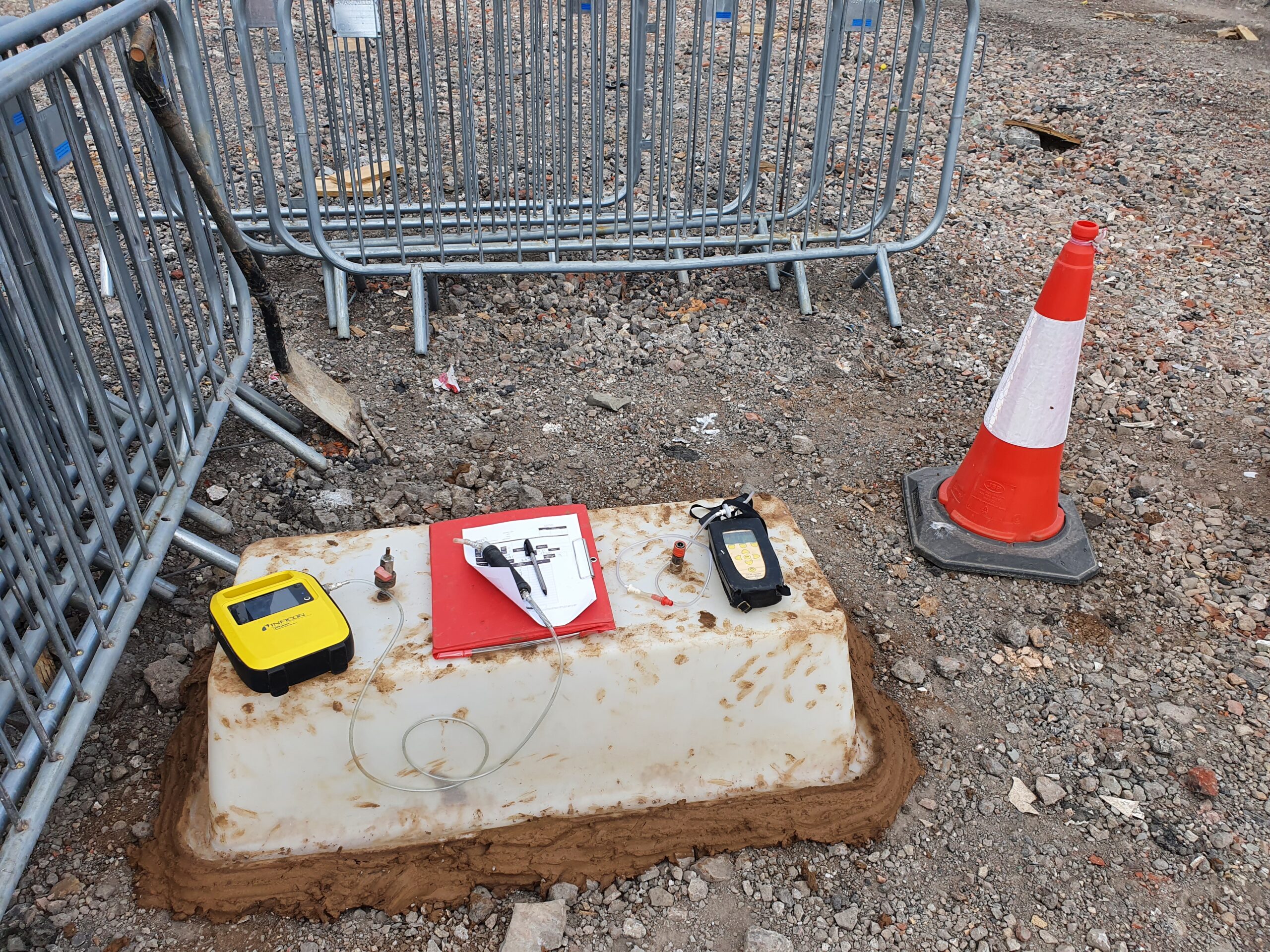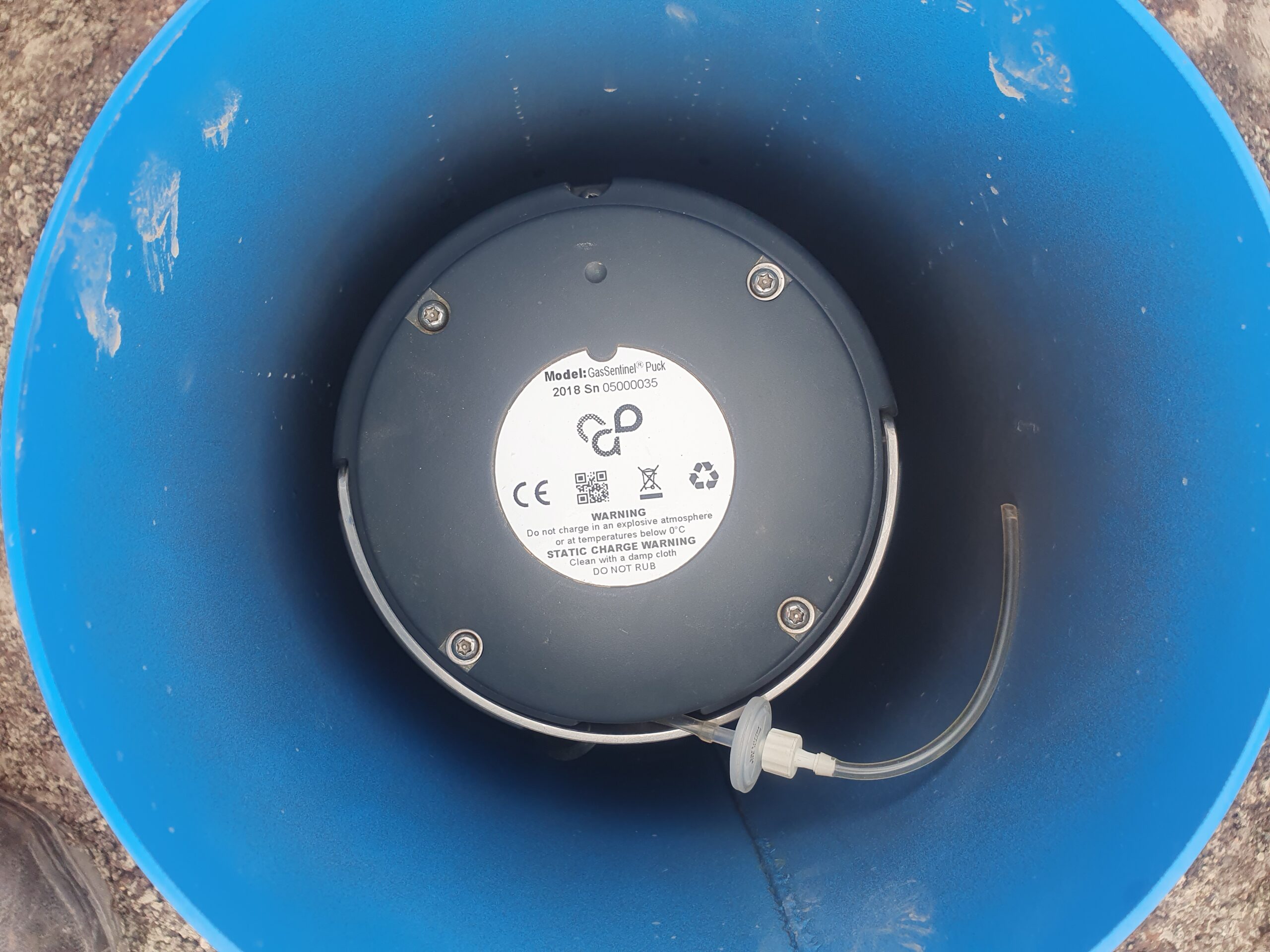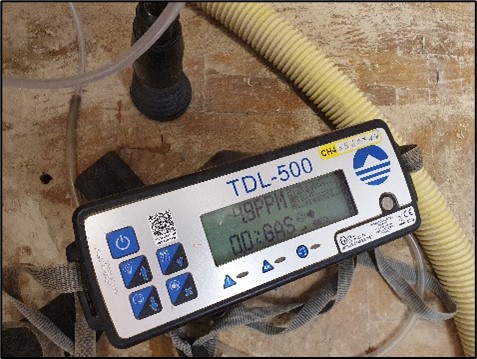- Surface emission survey
- Flux box testing
- DataPack report
This development site required surface emissions monitoring to provide evidence to any potential changes in the gas regime during development works.
The previously undeveloped parcel of land was under assessment for the development of a large new manufacturing facility. Site investigation had identified made ground and peat deposits at depth as potential sources of ground gas. During periodic ground gas monitoring, elevated concentrations of methane and carbon dioxide were recorded.
The main warehouse area had been characterised as CS2 and the potential for vertical ground gas migration was considered low. However, development proposals included significant piling activities and limited reprofiling works. As such, there were concerns that the onsite activities may change the ground gas regime, specifically through the introduction of preferential pathways.
To provide lines of evidence of any potential changes to the gas regime, a surface emissions monitoring programme was proposed. This was to be supplemented by periodic ground gas monitoring undertaken by the client using retained wells.
GGS specialists attended site across three visits to provide surface emissions monitoring data from before, during and after the intrusive piling works. During each visit, GGS undertook a high-resolution surface emissions survey for methane. Considering the survey data and development proposals, a series of targeted/strategic closed chamber flux box tests were then completed.
GGS provided the client with interim data in the form of formalised flux box test records and GIS grid survey plots of the surface emissions survey data following each site visit. Following completion of the site works, GGS provided the client with a factual DataPack report containing all the monitoring data, methodologies and monitoring schedule details.
The surface emissions monitoring data, supplemented by periodic ground gas monitoring and previous investigation, provided evidence that the on-site development activities had not significantly changed the ground gas regime, and importantly, that the piling activities had not introduced new vertical preferential pathways for ground gases to rise towards the surface.
The robust dataset accurately informed a revised conceptual site model and risk assessment. This in turn provided justification for the recommended gas protection measures and satisfied previous concerns that the development activities may alter the ground gas regime.




